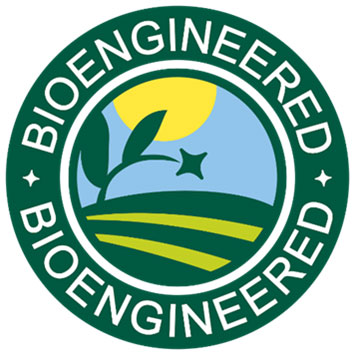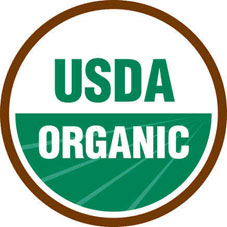By: Steven A. Abrams, MD, FAAP & Philip J. Landrigan, MD, FAAP
With so many conflicting messages about diet in the world today, you may wonder about the healthiest way to feed your child. Nutrition labels are stuffed with facts, but many parents and caregivers feel confused about what's good for kids and what to avoid.
Healthy eating is essential to your child's growth and well-being. That's why, in a new report, we take a close look at evidence surrounding genetically modified organisms, or GMOs. (See, "GMO Foods & Children's Health: AAP Examines Benefits, Risks & Unknowns.") Here's what we know about how foods and drinks with GMOs may affect your child's health.
What are GMOs?
A GMO—also known as a
bioengineered product—is any living thing whose genetic code (DNA) has been changed to improve the way it grows, thrives, looks or tastes.
In terms of what humans eat, this usually means corn, soybeans, canola (a grain used to make cooking oil) and sugar beets. GMO can also apply to protein sources. Examples include genetically modified salmon or farm animals such as cattle and chickens whose feed may contain GMO corn or soybeans.
Are GMOs safe to eat?

|
Label required by the U.S. Department of Agriculture (USDA) for bioengineered food products
|
There's nothing wrong with changing the genetic code of a plant or animal. In fact, we've been doing this for centuries.
Hybrid plants created from two or more existing varieties have long been part of our food chain. Fruits and nuts are often grown on hybridized trees. We've been crossbreeding livestock for hundreds of years.
However, some GMO foods may pose health risks, especially for kids. This is because most genetic engineering has focused on making crops resistant to weed killers, (herbicides) that farmers spray in large quantities on the food we later eat.
Genetic engineering enables crops like corn and soybeans to survive repeated doses of weed killer. (If the plants weren't genetically altered, the herbicides would kill them.)
How herbicides can pose a health threat
The main ingredient in herbicides used across the United States is
glyphosate. This chemical is also present in weed killers you may have used around your home.
When glyphosate was first approved, it was thought to pose no threat to human health. But research from around the world now shows that these chemicals can build up in our bodies. This can increase the risks for some
blood cancers, including specific kinds of leukemia and lymphoma. Some studies show that farmers who use glyphosate on their crops face a greater risk of developing these blood cancers than people with lower exposure to herbicides.
It's not the food itself, it's how we grow it.
Understanding that herbicides are the issue—not the crops themselves or the animals that eat them—is essential. Future studies may link herbicides with other health concerns. But in the meantime, we should not ignore the evidence that points to a potential for increased cancer risks, especially for growing children and teens.
How do we know that herbicides are making their way into our bodies?
Recent studies show that glyphosate is present in many foods, especially
ultra-processed foods (more information, below). It also shows up in 80% of urine samples taken from people in the U.S.—including kids as young as 6 years. This suggests that most children and adults are consuming foods that may increase their chances of developing cancer.
Which foods & drinks are likely to be made with GMOs?
GMOs are often present in ultra-processed foods such as:
Keep in mind that foods on this list
can be made without GMOs. However, most brands of ultra-processed foods contain corn, soy, canola and other ingredients from genetically modified crops.
Can't we grow food without herbicides?

|
The USDA organic seal used by certified farms and businesses to identify their products as organic
|
Yes, we can. For example, foods that are certified organic by the USDA are raised without synthetic chemical herbicides or pesticides (bug sprays). Organic foods include protein sources (meat, dairy, eggs and fish) from animals that eat only GMO-free feed.
However, you shouldn't assume that something is GMO-free just because it's labeled "natural" or "healthy." Look for the GMO-free or certified organic label—or, if you're at the farmer's market, ask if fruits and vegetables, fish, meats or dairy products you're buying are GMO-free.
Also keep in mind that
washing and scrubbing produce under running water, even if it's not organic, can reduce herbicides.
Why aren't more foods organic?
Wondering why don't we raise more foods without harmful chemicals? You've probably noticed that organic foods typically
cost more. This is partly because food producers have to find other ways to control weeds and pests that threaten their crops.
These other methods may involve more labor and expense than spraying plants with chemicals, which can be done with large-scale farm equipment. Many GMO crops are specially engineered to survive multiple blasts of herbicide during the growing season.
Tips for limiting the GMOs on your family plate
You may not be able to keep your child or teen from consuming
some GMOs. (A snack they grab at school or a friend's house might not be GMO-free, for example.)
Instead of worrying about every morsel your kids eat, you can start by building awareness and gradually reducing your consumption of GMO products.
Read
food labels carefully, consider choosing foods and drinks that are GMO-free when possible.
Fill your family's plate with whole foods, including fresh fruits and vegetables, nuts, whole grains and legumes (such as beans, peas and lentils).
Cut back the amount of processed food in your family's diet.
Are infant formula and packaged baby foods GMO-free?
You may wish to check labels to make sure formula and baby foods are free of GMOs. The non-GMO label means that any cow's or goat's milk used to make the formula comes from animals that ate a GMO-free diet.
Why do I keep hearing that GMOs concerns aren't real?
Social media posts and news stories may shrug off the dangers of GMOs, but this doesn't mean parents should ignore concerns about them. It's best to read the evidence and make your own best decisions about possible risks.
Health experts keep pace with research on nutrition and other childhood health issues. When studies suggest that something may not be safe, we offer guidance to help families make healthy choices.
Early research often points to dangers that threaten our kids' health. For example, the push to eliminate
lead from wall paint, gasoline and other sources launched in the late 1970s. It was driven by
a pediatrician's concern that lead exposure was harming children. Research confirmed that lead can build up in a child's body, damaging the brain and nervous system and, in the worst cases, claiming lives.
Since then, lawmakers and health authorities have taken strong steps to keep lead away from kids (and all of us). Being cautious about GMOs (and herbicides in our food chain) is another example of fact-based decisions that support lifelong health.
Beyond monitoring GMOs in my family's diet, how else can I reduce herbicide exposure?
Avoid using weed killers that contain glyphosate,
2,4-D and other harmful substances in your yard. Look for
organic products that help control weed growth when possible. Also consider planting fruits and vegetables at home or a community garden. This gives you a chance to teach your children about healthy ways to grow food and care for the earth.
What does the new AAP policy on GMOs say?
Here are some key takeaways from our report:
- GMOs can be found in many foods eaten in the U.S. However, they mostly come from 10 genetically engineered crops: alfalfa, apples, canola, corn, cottonseed, papaya, potatoes, soybeans, yellow squash and zucchini.
- Most GMO crops are used to make ultra-processed foods and animal feed.
- As of January 2022, GMO foods sold in the U.S. must be labeled. Foods and drinks made by smaller companies, restaurants and travel-related food providers (for example, airport kiosks) may be exempt from this rule.
- GMO technology has potential benefits such as making foods more nutritious. However, this isn't happening yet in the United States.
- Glyphosate, the main herbicide used on GMO crops, has been classified as "probably carcinogenic" (linked with cancer) by the World Health Organization. The United States has not made this designation for it.
- Measurable amounts of glyphosate can be found in GMO foods.
- Babies can absorb GMOs through their parent's system even before they're born. GMO exposure has been linked with higher risks for premature, disrupted hormone systems and abnormalities of the reproductive organs.
- Choosing whole, unprocessed (or minimally processed) foods more often is a helpful step in reducing a child's exposure to GMOs. Families who want to avoid GMOs altogether may consider buying certified organic foods when possible. By U.S. law, certified organic foods cannot be produced with GMOs crops or feed.
Remember
Your child's pediatrician can help you thing through GMOs questions, such as the cost and potential health impact of food choices. Ongoing research that will help us understand more about GMOs, herbicides, pesticides and children's health, now and in the future.
More information
About Dr. Abrams
 Steven A. Abrams, MD, FAAP, is a board-certified pediatrician and a Professor of Pediatrics at the University of Texas at Austin. Within the American Academy of Pediatrics, he is past chair of the National Committee on Nutrition. Dr. Abrams also served on Dietary Advisory Committee of the U.S. Department of Agriculture. Steven A. Abrams, MD, FAAP, is a board-certified pediatrician and a Professor of Pediatrics at the University of Texas at Austin. Within the American Academy of Pediatrics, he is past chair of the National Committee on Nutrition. Dr. Abrams also served on Dietary Advisory Committee of the U.S. Department of Agriculture.
|
About Dr. Landigran
 Philip J. Landrigan, MD, MSc, FAAP directs the Program for Global Public Health and the Common Good at Boston College. He directed a major study of pesticides and children's health at the National Academy of Sciences and is a past Chair of the AAP Committee on Environmental Health (now COEHCC). Philip J. Landrigan, MD, MSc, FAAP directs the Program for Global Public Health and the Common Good at Boston College. He directed a major study of pesticides and children's health at the National Academy of Sciences and is a past Chair of the AAP Committee on Environmental Health (now COEHCC).
|
Editor’s note: Jaclyn Albin, MD, FACP, FAAP, DipABLM, also contributed to this article.